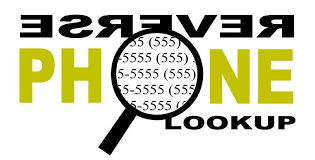Reverse Lookup Techniques

To help detect scams, reverse lookup and research can be used to validate the identity of people and companies we are facing and detect potential scams. We may face scams in all forms of communication including phone, e-mail, fax, letter or in person contact. But to really know if these contacts are legitimate and come from valid sources, we can resort to a variety of options and techniques including reverse lookup.
Usually, when we want to find someone’s phone number, we use a white or yellow phone directory to track their numbers down. We could also research on line to obtain phone numbers by just entering someone’s name. Now, what if we only had someone’s phone number and we wanted to verify the phone number’s ownership like a name and address? We could reverse lookup their phone number, which is the process of entering a person’s phone number in order to get their name and address. The same approach can be applied to fax numbers to identity ownership, and computer IP addresses to identity the computer’s location. Below are a few reference tools to help you perform reverse lookup if you need to investigate a potential scammer and detect scams. Most of them provide basic search and reverse lookup tools for free but you may have to pay for more extensive lookup and research. Start with basic search before determining your specific needs for further research. One example is you may get conflicting information when doing reverse lookup on phone number or address, and the request seems to be pretty important to you so you may want to consider spending a few dollars and buy the confidence you need before giving your information away.
Reverse Lookup Options
1- In case you are facing a potential scam that has reached to you by fax and you want to make sure you are not passing up on a good opportunity by ignoring the fax, you can validate the fax number and check for free where or who the fax number belongs to before responding and calling back to further follow-up. The list of fax numbers is published by state and city. You can also verify the phone number and the address on the fax sheet before calling back while you’re at it. Research the fax number.
2- If you meet the company representative in person, ask for an ID and business card. You may ask to call the number listed on the card and do a free reverse check on the phone number to make sure the ID and the business card are genuine. There are many fake business IDs and business cards around because they are so easy to make. Always validate. You may also reverse lookup the address on the business card to validate company’s address. Research the phone number.
3- If you get an e-mail, do a free search on the status of the e-mail and get its IP address to locate the location of the computer. You should be even more suspicious if the e-mail is not from a legitimate company address. For example, if the e-mail claims to be from the xyz life insurance company, then the e-mail should come from joe@xyz.com. Once you have the IP address, do a search on the IP address on the same site and you’ll know where that e-mail belongs to with a complete company name, address and other details. Research the e-mail.
4- If you get a call, ask for a call back number and call them back yourself if you don’t have a caller ID. Before hanging up and calling them back, also ask about their company name, contact name and location. Then research their call back number. The search results will include name of the company or person and location. If there is a match between the search results and the information the caller provided, you have a bit more confidence in the caller and his intentions. Even if this is a legitimate request, make sure you only provide the information that you think is required for your case and if you don’t understand the request, ask more questions to understand why they need such information. Research the phone number.
5- If you get a letter, use the name, address, e-mail, phone or fax number published on the letter and perform steps 1, 2, 3 and/or 4 to authenticate the company’s identity.
Return to the identity theft awareness home page from reverse lookup.








